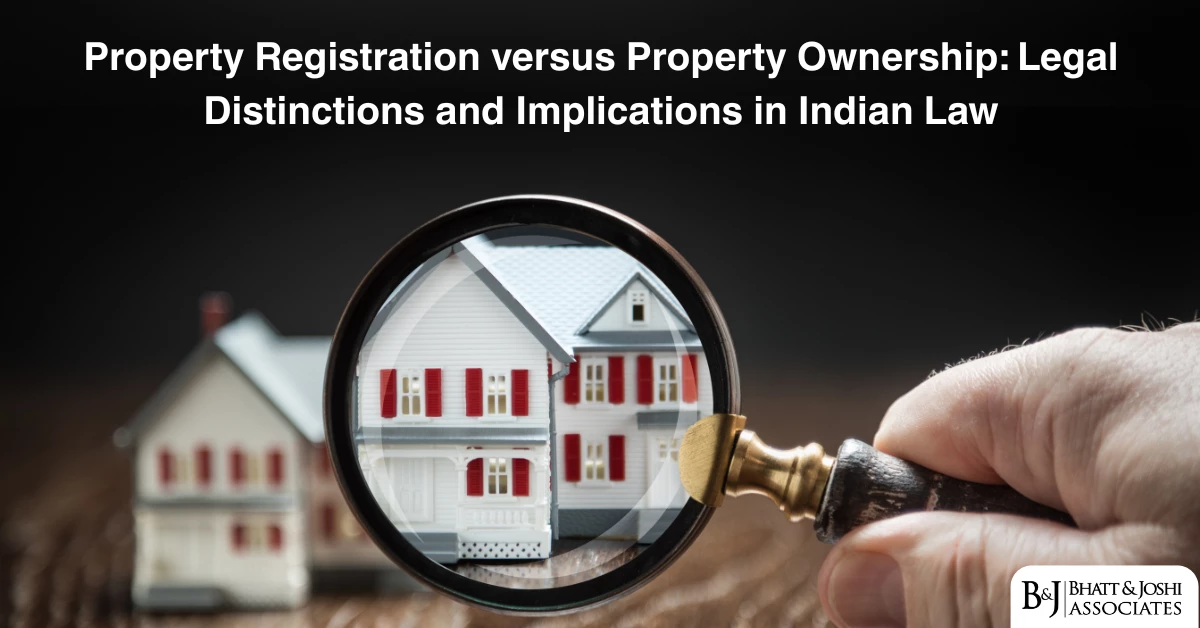Introduction
The law governing lease termination in India represents one of the most intricate areas of property jurisprudence, where the rights of lessors and lessees intersect with statutory provisions and judicial interpretations. Section 106 of the Transfer of Property Act, 1882 serves as the cornerstone for determining lease duration and termination procedures in the absence of explicit contractual terms or established local customs. This statutory provision has been the subject of extensive judicial scrutiny, particularly in cases involving disputes over manufacturing purposes and notice periods for lease termination.
The significance of Section 106 extends beyond mere procedural requirements, fundamentally shaping the balance of power between landlords and tenants in lease relationships. When this section applies, tenants enjoy enhanced security of tenure with longer notice periods, while landlords face greater restrictions on their ability to terminate leases and recover possession. Conversely, when Section 106 does not apply, tenants receive reduced protection, and landlords possess greater flexibility in lease termination procedures.
The recent Supreme Court decision in Nand Ram & Others v. Jagdish Prasad & Others has provided crucial clarity on the application of Section 106, particularly regarding unregistered lease agreements and the burden of proof for establishing manufacturing activities in leased premises. This judgment has significant implications for property law practitioners and stakeholders in lease transactions across India.
Legal Framework Governing Lease Termination under Section 106 of the Transfer of Property Act
Statutory Foundations
The Transfer of Property Act, 1882 establishes the fundamental framework for property transfers in India, with Section 106 specifically addressing lease duration and termination in situations where written contracts or local usage do not provide clear guidance. The section creates a dichotomy between leases for different purposes, establishing distinct notice periods and tenancy structures based on the intended use of the leased property.
Section 106 of the Transfer of Property Act, 1882 states verbatim:
“In the absence of a contract or local law or usage to the contrary, a lease of immovable property for agricultural or manufacturing purposes shall be deemed to be a lease from year to year, terminable, on the part of either lessor or lessee, by six months’ notice; and a lease of immovable property for any other purpose shall be deemed to be a lease from month to month, terminable, on the part of either lessor or lessee, by fifteen days’ notice.”
This provision creates two distinct categories of leases with different termination requirements. The classification hinges on the purpose for which the property is leased, with agricultural and manufacturing purposes receiving enhanced protection through longer notice periods and year-to-year tenancy presumptions.
Registration Requirements and Their Impact
The Registration Act, 1908 introduces additional complexity to lease relationships through its mandatory registration requirements. Section 17(1)(d) of the Registration Act mandates registration for “leases of immovable property from year to year, or for any term exceeding one year, or reserving a yearly rent.” This requirement creates a direct intersection with Section 106 of the Transfer of Property Act, as unregistered leases may face evidentiary challenges in court proceedings.
Section 49 of the Registration Act further compounds these challenges by stating that unregistered documents required to be registered “shall not affect any immovable property comprised therein” unless properly registered. However, the proviso allows unregistered documents to be received as evidence of collateral transactions not required to be effected by registered instruments.
The interplay between these registration requirements and Section 106 applications has generated considerable litigation, with courts required to balance statutory registration mandates against tenant protection principles embedded in the Transfer of Property Act.
Case Study Analysis: Nand Ram & Others v. Jagdish Prasad & Others
Factual Background and Proceedings
The Supreme Court’s decision in Nand Ram & Others v. Jagdish Prasad & Others presents a paradigmatic example of the complexities surrounding Section 106 applications. The case originated from a dispute involving an unregistered tenancy agreement executed in 2003 between a landlady and tenant for a five-year term. The agreement contained specific clauses restricting the lessor’s right to seek ejectment before lease expiry and prohibiting the lessee from subletting or creating third-party interests in the property.
Following the lease’s expiry in 2008, the tenant continued in possession without rent payment, prompting the landlady to serve a notice addressing the tenant as a monthly tenant and directing vacation within fifteen days. The tenant’s non-compliance led to the filing of a civil suit seeking possession recovery and mesne profits decree.
The tenant’s defense strategy centered on two primary arguments: first, that the premises was leased for manufacturing purposes, thereby attracting Section 106’s six-month notice requirement; and second, that the unregistered lease agreement spanning more than one year was inadmissible as evidence, rendering the suit unmaintainable.
Legal Issues and Judicial Analysis
The Supreme Court identified three critical issues requiring resolution: the compulsory registration requirement under Section 17 of the Registration Act and admissibility under Section 49; the applicability of Section 106 regarding notice periods; and the tenant’s burden of proof for establishing manufacturing activities.
Regarding registration requirements, the court confirmed that lease agreements exceeding one year fall under compulsory registration mandates. The five-year term in the disputed agreement clearly exceeded the one-year threshold, making registration mandatory under Section 17(1)(d) of the Registration Act.
The court’s analysis of evidentiary admissibility revealed nuanced considerations. While acknowledging that unregistered documents cannot serve as primary evidence for lease terms, the court recognized that factual determination of tenancy nature and purpose could proceed through alternative evidence, including oral testimony and rent receipts.
Manufacturing Purpose Determination
The court’s examination of manufacturing purpose criteria relied heavily on the precedent established in Allenbury Engineers Pvt. Ltd. v. Ramkrishna Dalmia and Others, where manufacturing purpose was defined as “purposes for making or fabricating articles or materials by physical labour, or skill, or by mechanical power, vendible and useful as such”. This definition emphasizes transformation processes that create distinct articles with different names, characters, or uses, rather than mere modifications of existing materials.
The tenant’s assertion of conducting “rubber business” failed to meet this stringent standard. The court noted the absence of detailed evidence regarding the nature of work performed in the factory shed, the processes employed, or the transformation of raw materials into finished products. The generic description of “rubber business” lacked the specificity required to demonstrate actual manufacturing activities within the legal definition established by precedent.
Judicial Findings and Implications
The Supreme Court’s findings established several important principles for Section 106 applications. First, unregistered lease agreements exceeding one year cannot serve as primary evidence for lease terms, though collateral evidence may establish tenancy facts. Second, tenants claiming manufacturing purpose protection bear the burden of proving actual manufacturing activities through detailed evidence of transformation processes.
The court distinguished the case from Park Street Properties Private Limited v. Dipak Kumar Singh and Another, which allowed unregistered lease deeds for collateral purposes showing possession nature and character. However, this distinction did not benefit the tenant, as manufacturing purpose could not be established through available evidence.
Regulatory Framework and Legal Standards
Classification of Lease Purposes
The distinction between manufacturing, agricultural, and other purposes under Section 106 requires careful analysis of actual activities conducted on leased premises. Courts have developed specific criteria for determining manufacturing activities, emphasizing physical transformation processes that create new products with distinct characteristics.
Agricultural purposes encompass cultivation activities, crop production, and related farming operations. The year-to-year presumption for agricultural leases reflects the seasonal nature of farming activities and the need for tenant security during cultivation cycles.
Leases for “other purposes” include residential, commercial, storage, and service-oriented activities not falling within manufacturing or agricultural categories. These leases receive month-to-month treatment with shorter notice periods, reflecting their generally less capital-intensive nature and reduced need for long-term security.
Notice Requirements and Procedural Compliance
The notice periods prescribed by Section 106 serve as minimum requirements that cannot be waived or reduced without explicit contractual provisions. For manufacturing and agricultural leases, the six-month notice period provides tenants with substantial time to arrange alternative arrangements or negotiate lease extensions.
The fifteen-day notice period for other purposes reflects the presumed mobility of such activities and reduced capital investment typically associated with month-to-month tenancies. However, courts have emphasized that these notice periods must be strictly observed, with premature termination attempts potentially invalidating eviction proceedings.
Burden of Proof in Manufacturing Purpose Claims
Recent judicial decisions have clarified that tenants claiming manufacturing purpose protection must provide comprehensive evidence of their activities. Generic business descriptions or vague references to industrial activities are insufficient to establish manufacturing purpose within the legal definition.
Courts expect detailed evidence regarding raw materials used, transformation processes employed, finished products created, and the distinct character of output compared to input materials. This evidentiary standard reflects the enhanced protection afforded to manufacturing leases and the need to prevent fraudulent claims for extended notice periods.
Contemporary Judicial Interpretations
Evolution of Manufacturing Purpose Standards
Modern judicial interpretations of manufacturing purpose have become increasingly sophisticated, recognizing technological advances while maintaining traditional transformation criteria. Courts examine whether activities involve genuine manufacturing processes or merely commercial operations using manufactured goods.
The Supreme Court’s emphasis on “physical labour, skill, or mechanical power” in manufacturing definitions reflects industrial realities while preventing commercial storage or trading activities from claiming manufacturing protection. This approach ensures that Section 106’s enhanced protection serves its intended beneficiaries without expanding beyond legislative intent.
Registration Act Interface
Contemporary courts have developed nuanced approaches to balancing registration requirements with tenant protection principles. While unregistered lease documents cannot establish contractual terms, courts recognize that denying all relief to parties in unregistered transactions could create harsh results inconsistent with equitable principles.
The distinction between primary evidence of contractual terms and collateral evidence of factual circumstances allows courts to address registration violations while still determining the true nature of lease relationships. This approach prevents technical registration requirements from completely negating substantive rights and obligations.
Comparative Analysis with Similar Provisions
Indian property law’s approach to lease termination through Section 106 reflects broader common law principles while incorporating specific provisions for Indian conditions. The distinction between agricultural, manufacturing, and other purposes recognizes India’s diverse economic structure and the varying capital requirements of different activities.
International comparative analysis reveals that India’s approach provides greater tenant protection than many jurisdictions, particularly for manufacturing and agricultural activities. This enhanced protection reflects policy choices favoring productive economic activities that require substantial capital investment and longer planning horizons.
Practical Implications for Stakeholders
Landlord Considerations
Property owners must carefully consider Section 106 implications when structuring lease agreements. Clear specification of lease purposes, proper registration procedures, and explicit contractual notice provisions can prevent disputes over applicable termination requirements.
Landlords should maintain detailed records of tenant activities to support or refute manufacturing purpose claims. Regular property inspections and documentation of actual use patterns can provide crucial evidence in termination proceedings.
Tenant Rights and Protections
Tenants claiming manufacturing purpose protection must maintain comprehensive records of their activities, including raw material procurement, production processes, and finished product characteristics. Generic business descriptions or incomplete documentation may prove insufficient in legal proceedings.
Understanding registration requirements enables tenants to make informed decisions about lease documentation and potential evidentiary challenges. While unregistered leases may face admissibility issues, tenants retain certain rights that courts may protect through alternative evidence.
Legal Practitioner Guidelines
Property law practitioners must navigate the complex intersection of registration requirements, Section 106 applications, and evidentiary standards. Proper case preparation requires thorough investigation of actual property use patterns and comprehensive documentation of manufacturing or other activities.
Effective representation in lease termination cases demands understanding of both substantive legal principles and procedural requirements. The burden of proof allocation between parties requires careful strategic planning and evidence development.
Future Developments and Recommendations
Legislative Reform Considerations
The current legal framework’s complexity suggests potential benefits from legislative clarification of key terms and procedures. Defining manufacturing purpose with greater specificity could reduce litigation while maintaining appropriate protection levels.
Harmonizing registration requirements with Section 106 applications through explicit statutory provisions could eliminate current ambiguities and provide clearer guidance for practitioners and parties.
Judicial Trend Analysis
Recent Supreme Court decisions indicate increasing emphasis on evidentiary standards and burden of proof allocation in lease termination cases. This trend toward stricter proof requirements may impact future litigation strategies and case outcomes.
Courts’ growing sophistication in analyzing manufacturing activities suggests continued evolution of legal standards as technology and business practices advance. Practitioners must remain current with developing jurisprudence to effectively represent clients.
Conclusion
The law governing lease termination under Section 106 of the Transfer of Property Act represents a sophisticated balance between landlord rights and tenant protection. The Supreme Court’s decision in Nand Ram & Others v. Jagdish Prasad & Others clarifies crucial aspects of this legal framework while highlighting the importance of proper documentation and evidence in lease disputes.
The intersection of registration requirements with Section 106 applications creates complex legal landscapes that require careful navigation by all stakeholders. Understanding these principles enables property owners, tenants, and legal practitioners to structure relationships and resolve disputes more effectively.
As India’s economy continues evolving, the legal framework governing lease relationships must adapt to new business models while maintaining fundamental protection principles. The current jurisprudential approach provides flexibility for such adaptation while preserving core tenant protections that serve important policy objectives.
The practical implications of Section 106 extend far beyond individual lease disputes, influencing broader patterns of property investment, business location decisions, and economic development strategies. Effective legal frameworks in this area contribute to overall economic efficiency while protecting legitimate stakeholder interests.
Future developments in this area will likely focus on clarifying definitional standards, harmonizing procedural requirements, and adapting traditional concepts to contemporary business realities. The continuing evolution of this legal area reflects its fundamental importance to India’s property law system and broader economic development goals.
References
- Nand Ram & Others v. Jagdish Prasad & Others, Civil Appeal No. 9918/2011, Supreme Court of India (2020). Available at: https://main.sci.gov.in/supremecourt/2011/4832/4832_2011_17_1502_21562_Judgement_19-Mar-2020.pdf
- Allenbury Engineers Pvt. Ltd. v. Ramkrishna Dalmia and Others, (1973) 1 SCC 7, Supreme Court of India.
- Park Street Properties Private Limited v. Dipak Kumar Singh and Another, Supreme Court of India.
- Transfer of Property Act, 1882, Section 106. Available at: https://indiacode.nic.in/show-data?actid=AC_CEN_3_20_00042_188204_1523272233671&orderno=114§ionId=44211§ionno=106
- Registration Act, 1908, Sections 17 and 49, Government of India.
- “S.106 Transfer Of Property Act | Onus On Tenant To Prove That Premises Was Leased For Manufacturing Purpose: Supreme Court,” LiveLaw (September 29, 2023). Available at: https://www.livelaw.in/supreme-court/s106-transfer-of-property-act-onus-on-tenant-to-prove-that-premises-was-leased-for-manufacturing-purpose-supreme-court-238989
- “Section 106 of Transfer of Property Act, 1882,” iPleaders Blog (March 24, 2022). Available at: https://blog.ipleaders.in/section-106-of-transfer-of-property-act-1882/
- “Section 106 of the Transfer of Property Act: Sample Notice Template, Judgement,” 99acres Articles (June 27, 2024). Available at: https://www.99acres.com/articles/section-106-of-transfer-of-property-act.html
- “Defining ‘Manufacturing Purposes’ in Tenancy Agreements: Allenbury Engineers v. Dalmia and Implications on Section 106 & 107 of the Transfer of Property Act,” CaseMine Commentary (October 16, 2024). Available at: https://www.casemine.com/commentary/in/defining-‘manufacturing-purposes’-in-tenancy-agreements:-allenbury-engineers-v.-dalmia-and-implications-on-section-106-&-107-of-the-transfer-of-property-act/view
- “Nand Ram (D) Through LRS. & ORS V/S Jagdish Prasad (D) Through LRS.,” Briefcased Legal Database (July 27, 2021). Available at: https://briefcased.in/case-brief/property-law/nand-ram-d-through-lrs-ors-v-s-jagdish-prasad-d-through-lrs/
PDF Links to Full Judgment
- https://bhattandjoshiassociates.s3.ap-south-1.amazonaws.com/judgements/4832_2011_17_1502_21562_Judgement_19-Mar-2020.pdf
- https://bhattandjoshiassociates.s3.ap-south-1.amazonaws.com/judgements/Allenburry_Engineers_Private_Ltd_vs_Ramakrishna_Dalmia_Ors_on_15_September_1972.PDF
- https://bhattandjoshiassociates.s3.ap-south-1.amazonaws.com/judgements/M_S_Park_Street_Properties_Pvt_Ltd_vs_Dipak_Kumar_Singh_And_Anr_on_29_August_2016.PDF
- https://bhattandjoshiassociates.s3.ap-south-1.amazonaws.com/judgements/A1882-04.pdf
- https://bhattandjoshiassociates.s3.ap-south-1.amazonaws.com/judgements/the_registration_act,1908.pdf














